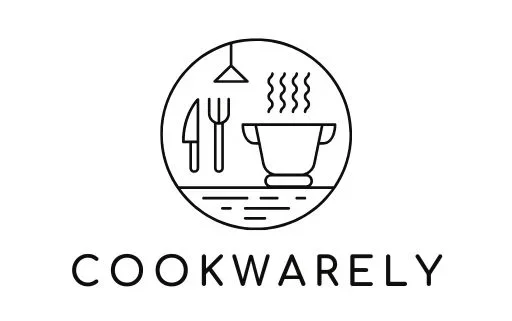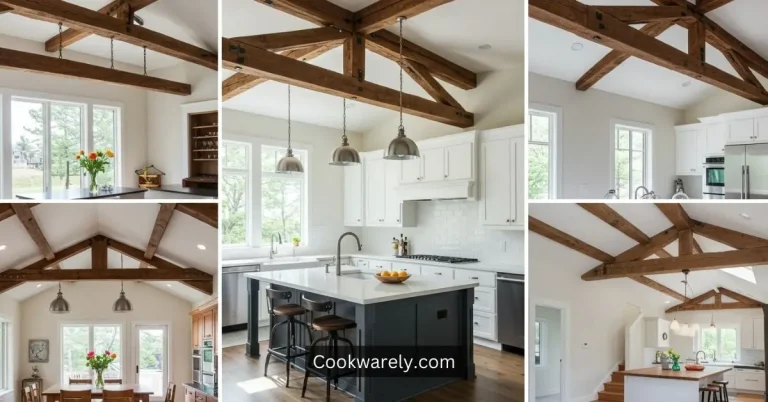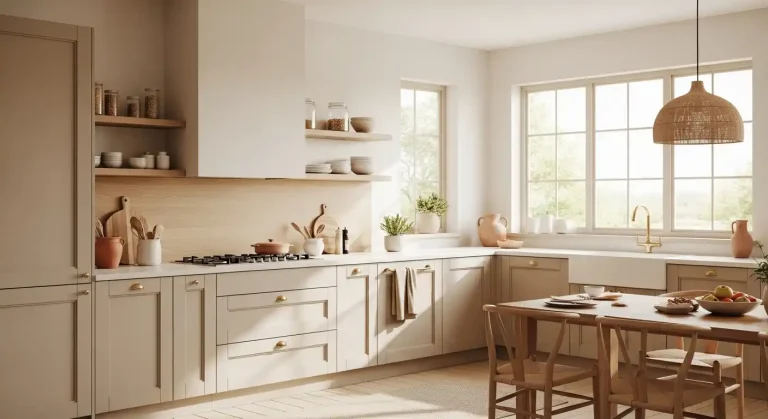Butler’s Pantry vs Kitchen Island: What’s Right for Your Home?
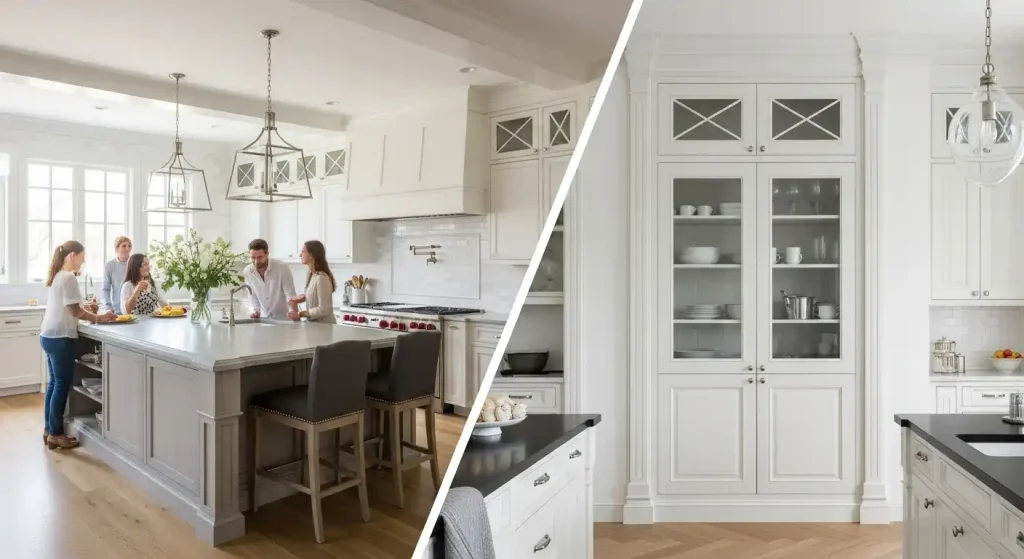
Butler’s pantry vs kitchen island—both add style and function, but in different ways.
You’re dreaming of a kitchen renovation. You picture flawless dinner parties and serene morning coffee.
But then you hit a roadblock. Do you choose the popular kitchen island or the coveted butler’s pantry?
This choice is about more than looks. It will change how you cook, store your things, and spend your money.
Picking the wrong one could leave you with a beautiful kitchen that just doesn’t work for your life.
This guide will make the decision clear. We will break down the pros, cons, costs, and best uses for each option.
By the end, you will know if a butler’s pantry, a kitchen island, or even both is the right fit for your home and your kitchen layout ideas.
Multifunctional Powerhouse: The Kitchen Island
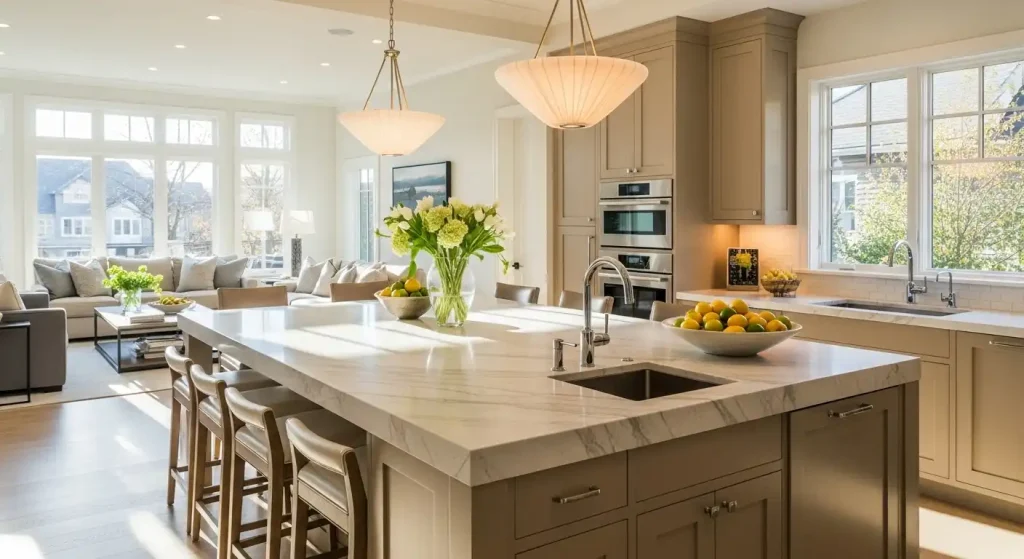
A kitchen island is a freestanding cabinet unit that sits in the middle of the room.
Its main job is to add more counter space, storage, and often seating.
Think of it as a central command station for everything you do in the kitchen.
Big Benefits of a Kitchen Island
The main kitchen island benefits are all about adding function and social space. Here’s what it does well:
- It’s a Social Hub. An island naturally draws people in. Guests can sit and chat while you cook. It keeps the cook part of the action instead of stuck alone by the stove.
- It Adds Seating. A breakfast bar is a classic island feature. It’s perfect for quick meals, homework, or just having a cup of coffee.
- It Provides More Counter Space. You get a large, dedicated spot for food prep, setting out buffet-style meals, or holding everyday appliances.
- It Offers Accessible Storage. Islands are great for deep drawers for pots and pans, open shelving for cookbooks, or cabinets for dishes.
- It Can Hold Appliances. You can build a cooktop, sink, or wine fridge right into the island. This can help your overall kitchen layout ideas by freeing up wall space.
Downsides to Consider
An island isn’t perfect for every kitchen. Be honest about these potential problems:
- It Needs a Lot of Room. You must have enough space to walk around it comfortably. Experts recommend at least 36 to 48 inches of walking space on all sides. If your kitchen is narrow, an island will make it feel cramped.
- It Can Break Your Workflow. The classic “work triangle” connects your fridge, sink, and stove. Plopping an island in the middle can block this path and make cooking less efficient.
- It Becomes a Clutter Magnet. That beautiful countertop is a prime target for mail, keys, and school permission slips. Without effort, it can look messy.
- Costs Add Up Fast. A basic island is one thing. But adding plumbing for a sink or electrical outlets for appliances will significantly increase your budget.
Who Is an Island Best For?
A kitchen island is the right choice if:
- You have an open-concept layout with plenty of square footage.
- Your family loves to gather in the kitchen.
- You do a lot of cooking and need serious prep space.
- You want a casual spot for eating and socializing.
What Does a Kitchen Island Cost?
The price range is huge. A simple, furniture-style island on wheels might cost a few hundred dollars.
A custom-built island with a stone countertop, built-in appliances, and plumbing can easily cost several thousand.
On average, homeowners spend between $3,000 and $5,000 for a built-in island without appliances.
Remember, adding a sink or cooktop will push that price much higher.
The Hidden Workhorse: The Butler’s Pantry
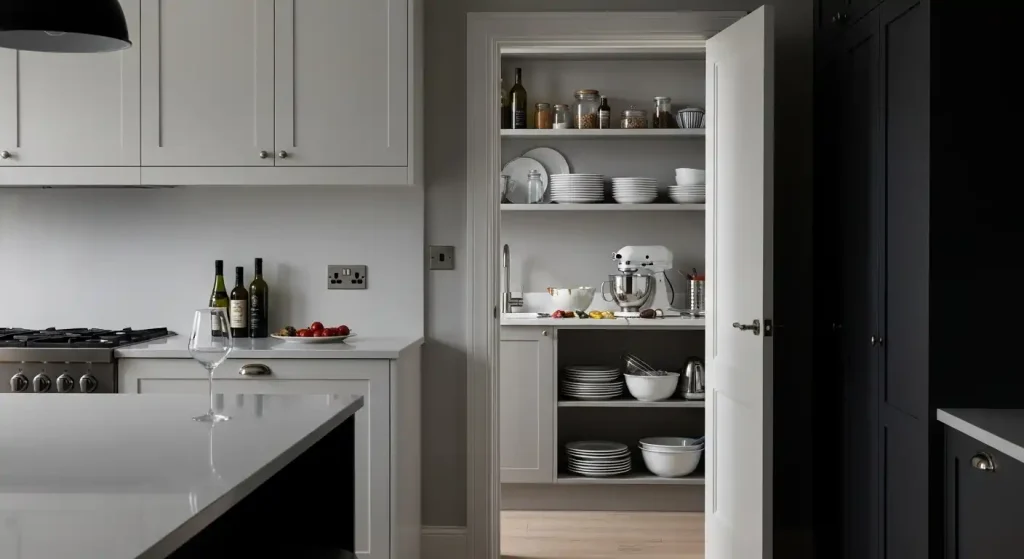
A butler’s pantry is a small room or tall cabinet area between your kitchen and dining room. It’s not meant to be the star of the show.
Its main purpose is to work behind the scenes. Its superpower is hiding clutter, keeping your main kitchen looking perfect.
Why a Butler’s Pantry is a Storage Superhero
The biggest benefit of butler’s pantry storage is keeping things out of sight. Here’s how it helps:
- It Hides the Mess. This is the main point. You can shut the door on small appliances, dirty dishes, and party platters. Your main kitchen stays clean and ready for guests.
- It Offers Specialized Storage. This isn’t for everyday plates. It’s for your stand mixer, your good silverware, holiday platters, and table linens. You can store bulk goods from Costco here, too.
- It’s a Second Prep Zone. You can use it as a coffee bar, a baking station, or a place to stage food before bringing it out to guests. No more fighting for counter space during big meals.
- It Can Have Extra Features. Many include a second sink for easy cleanup or a wine fridge for entertaining.
- It Feels Luxurious. This feature adds a touch of classic, high-end charm to your home.
The Trade-Offs of a Butler’s Pantry
This feature has some real drawbacks you need to consider:
- It Uses Up Space. A butler’s pantry takes up square footage that could be part of your main kitchen. In a smaller home, this is a big sacrifice.
- It Can Be Wasted. If you don’t have a lot of special dishes or don’t entertain, this room might become a fancy closet for things you never use.
- It’s Not Social. Unlike an island, it’s a separate room. The person prepping coffee or cleaning up is cut off from everyone else.
Who Needs a Butler’s Pantry?
This is the right choice if:
- You host dinner parties or holiday gatherings often.
- You love to bake and need a dedicated station for your mixer and supplies.
- Your main kitchen is small and you need more storage somewhere else.
- You get stressed out by visual clutter on your counters.
- You want a feature that makes your home feel more high-end.
What Does a Butler’s Pantry Cost?
The price depends completely on how you build it. Converting an existing closet or deep alcove might cost between $2,000 and $4,000.
Building a new wall and creating a small room from scratch is a major project. This can cost $10,000 or much more, especially if you add plumbing for a sink.
What Do You Actually Store In One?
Think of it as backstage storage for your kitchen. Perfect items include:
- Small appliances: blender, stand mixer, toaster, air fryer
- Serving pieces: large platters, punch bowls, fancy serving trays
- Entertaining supplies: tablecloths, napkins, fancy glassware, holiday dishes
- Pantry overflow: bulk boxes of snacks, extra paper towels, large bags of flour or sugar
Head-to-Head: Key Decision Factors
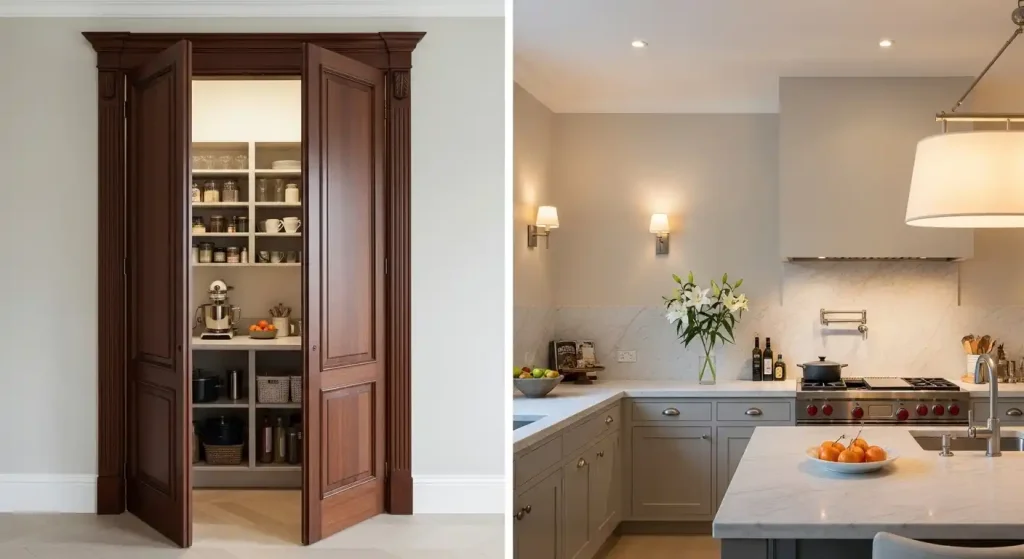
Now let’s put them directly against each other. Choosing between a butler’s pantry vs kitchen island comes down to a few key questions about your home and how you live. Ask yourself these things to find your answer.
Do You Have the Room?
This is the most practical place to start. Your space decides what’s even possible.
- For an Island: You need open floor space. Measure the width of your kitchen. You need room for the island itself plus at least 3 feet of walking space around all sides. If your kitchen is less than 13 feet wide, an island will likely feel cramped.
- For a Butler’s Pantry: You need extra square footage for walls and a separate area. This often means sacrificing space from an adjacent room, like a formal dining room or hallway. It’s less about open space and more about having room to build a small closet or room.
How Do You Actually Use Your Kitchen?
Your lifestyle is the most important factor.
- Choose the Island if: You are a “social butterfly” cook. You love having people around you while you prepare food. Your kitchen is the heart of your home, where everyone gathers for meals, homework, and conversation.
- Choose the Butler’s Pantry if: You are an “everything in its place” entertainer. You value a clean, clutter-free look. You want a hidden spot to stage a dinner party or hide the mess from breakfast before guests arrive.
Do You Need Storage or Surface?
Think about your specific clutter problems.
- Need Closed Storage? A butler’s pantry wins. It is designed to hide small appliances, serving dishes, and pantry overflow behind closed doors.
- Need Counter Space? An island wins. It gives you a large, open surface for chopping vegetables, rolling dough, or setting out a buffet.
What’s Your Budget?
Costs vary, but the return on investment can differ too.
- Islands are often seen as a must-have feature for many buyers. They add visible value to the main living area.
- Butler’s Pantries are a luxury perk. They appeal to buyers who love to entertain but aren’t a requirement for everyone. A real estate agent might say an island has broader appeal, while a butler’s pantry is a “wow” feature for the right buyer.
Can You Have Both?
Yes. In a very large kitchen, they work together perfectly. The island serves as the main prep and social hub.
The butler’s pantry acts as the backup, housing appliances and storing serving pieces. This is the ultimate setup for serious entertainers and large families.
Here’s a quick guide to see which fits your situation best:
| Decision Factor | Kitchen Island | Butler’s Pantry |
|---|---|---|
| Best For | Socializing, casual dining, extra prep space | Hiding clutter, storing appliances, formal entertaining |
| Space Needed | Open floor space (width) | Dedicated square footage (for walls) |
| Ideal Layout | Open-concept kitchens | Homes with formal dining rooms |
| Storage Type | Open shelving, deep drawers | Closed cabinets, specialized shelving |
| Visual Impact | A central focal point | Hidden, out of sight |
| Budget-Friendly | Possible with a simple furniture island | Only if converting existing closet space |
Making Your Choice: A Simple Checklist
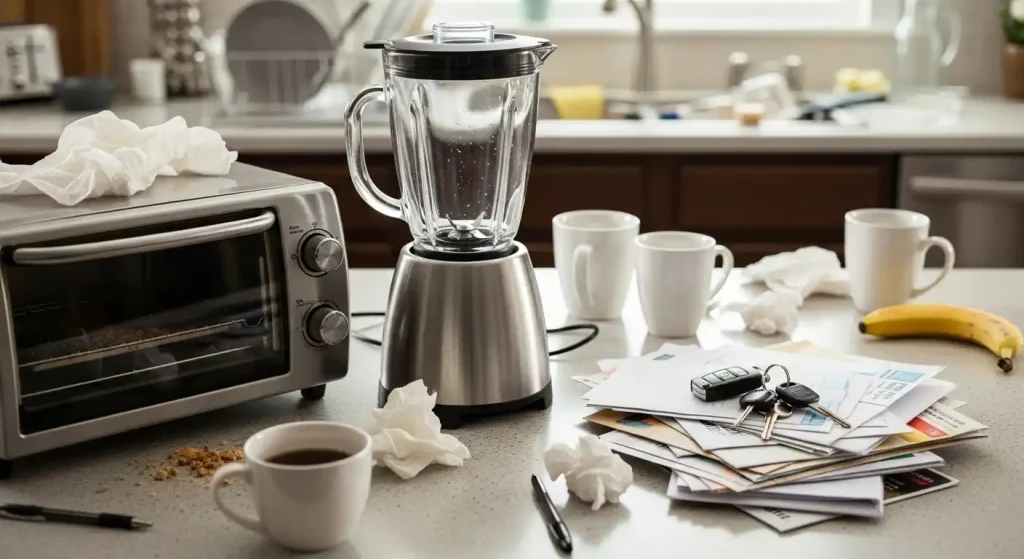
Ready to decide? Ask yourself these questions. Your answers will point you toward the right choice, whether it’s for the social kitchen island benefits or the hidden butler’s pantry storage.
- How much available floor space do you have? Grab a tape measure and get the exact numbers. This is your first step.
- What is your biggest kitchen frustration right now? Is it a lack of seating for your family? Or is it countertops covered in appliances with no place to hide them?
- How do you really use your kitchen? Is it for daily family meals and homework? Or is it for hosting large dinner parties?
- What is your realistic renovation budget? Be honest about what you can spend.
Conclusion
So, which one wins the butler’s pantry vs kitchen island debate? The truth is, neither. There is no single best answer for every home.
The kitchen island is the champion of social, open living. It brings people together. The butler’s pantry is the hero of organization. It hides clutter and makes entertaining smooth.
The right choice is the one that fits your life. It should make your kitchen a more joyful and efficient place for you.
Still unsure? Grab a tape measure. Answer the checklist questions. Then, talk to a local kitchen designer for professional advice. What’s your biggest kitchen dilemma? Share it in the comments below
